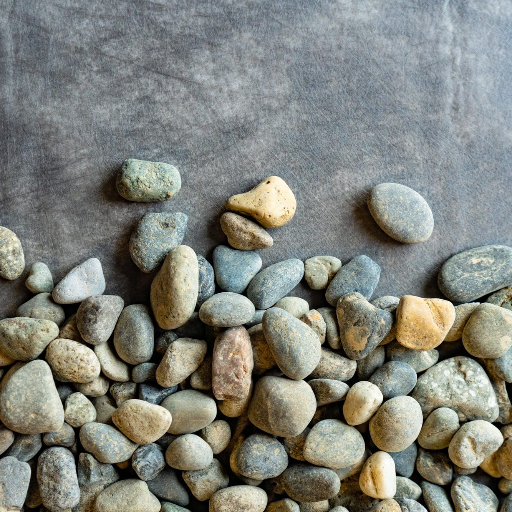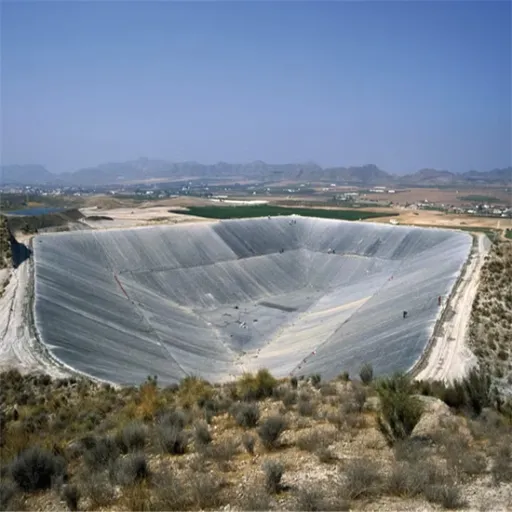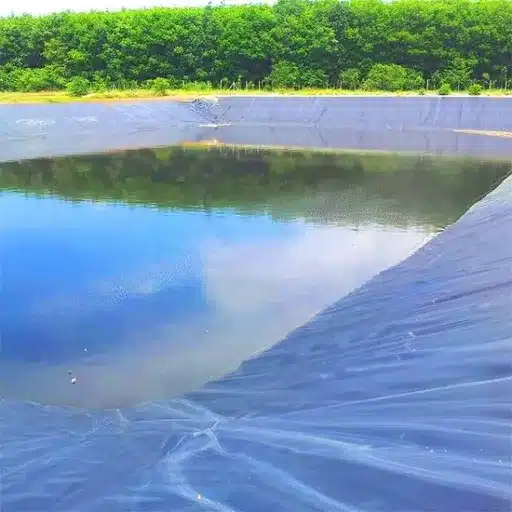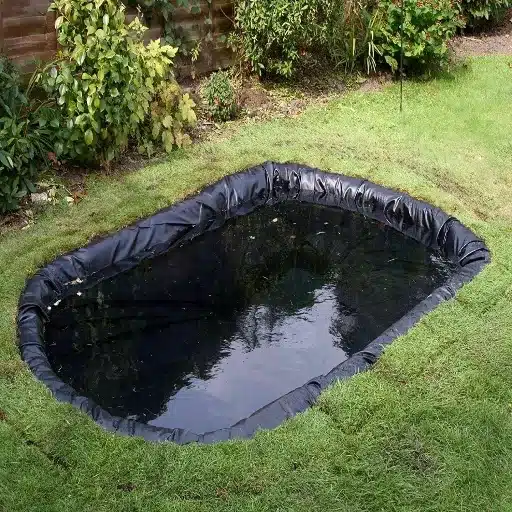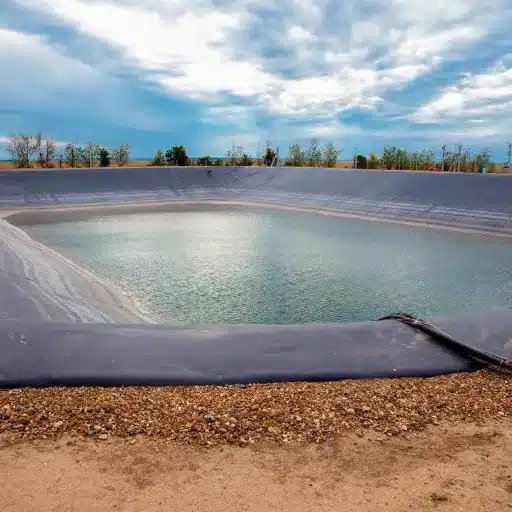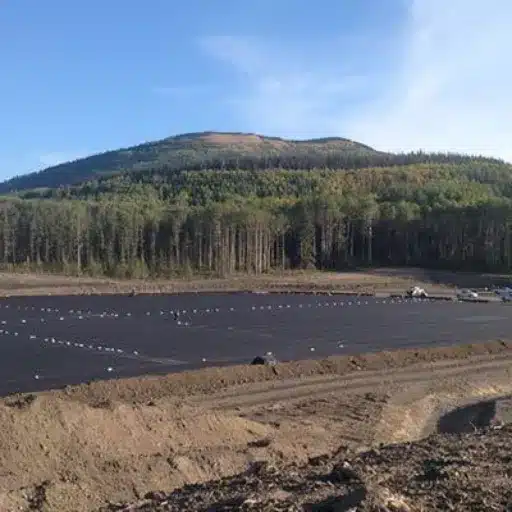Maintaining an outdoor space that is beautiful and hardly ever calls for work yields ultimate frustration from stubborn weeds. For a homeowner, landscaper, or garden lover, finding the perfect combination of weed growth inhibition beneath the gravel could be a recipe for making a difference. This is the setting for heavy-duty landscape fabric. This durable yet innovative material forms a very effective barrier against weeds so that gravel sitting areas are neat and clean during times when you’d rather be doing other things. We will, in this piece, discuss the major reasons why you should use heavy-duty landscape fabric for gravel work-out areas, how it works, and some critical factors to consider in choosing the fabric that shall suit you best. Whether your job is on a driveway, walkway, or garden path, the framework laid here will cover all the considerations for getting started.
Introduction to Landscape Fabric and Its Importance
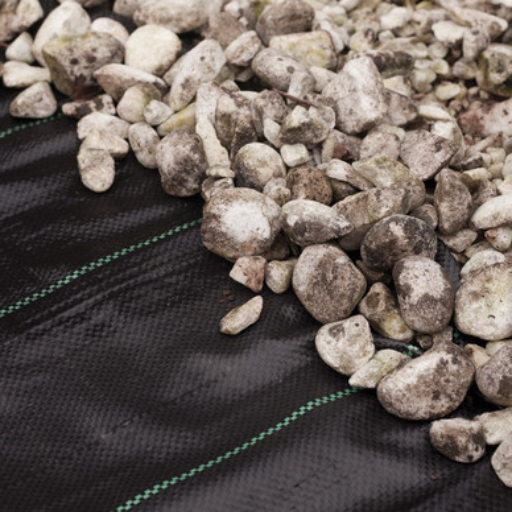
A landscape fabric is a natural barrier that inhibits weed growth and allows for water and nutrient transportation through to the soil. Made to resist weathering and degradation by UV rays, these fabrics are laid on the soil surface and are either pegged or covered with gravel or other top layers. Landscape fabric blocks sunlight, thus preventing weed seeds in the soil from germinating and growing, thereby providing maintenance-free gravel areas.
Understanding Landscape Fabric
Landscape fabric is commonly referred to as geotextile fabric and provides a workable option for weed control while maintaining the clean appearance of the outdoor area, especially the gravel areas. It is a very good tool for weed prevention but also will offer erosion control and help with soil stabilization.
These types come in woven, non-woven, or perforated; the choice of landscape fabric will vary depending on the needs of the project. For example, woven fabric is used for areas under heavy traffic or load because of its strength and durability; non-woven fabrics are used in garden beds due to better water permeability.
Studies found that the proper installation is one of the major factors affecting the lifespan of landscape fabric and its efficiency. When installed correctly, depending on the nature of the material and its environment, the highest quality fabrics may last between five and 20 years. For example, an area where fabrics without UV resistance are exposed to constant sunlight will hardly outlast one to two years, whereas in shaded places where the sun’s rays will never break the fabric, some fabrics could last as much as 15 to 20 years.
One study concludes that landscape fabric under gravel can reduce weed growth by up to 90%, making it best to consider it with driveways, pathways, or decorative landscaping. Furthermore, many products are now viewed as environmentally friendly, with biodegradable options for temporary applications and recycled materials for permanent applications.
Using the appropriate type of landscape fabric in an appropriate manner will allow one to save on time; hence, it will cost less maintenance in future. Also, it improves the aesthetic outlook of one’s outdoor areas.
Role of Weed Barriers in Gravel Landscaping
Landscape weed barriers, such as landscape fabrics, maintain the integrity and appearance of gravel landscaping as formalized landscaping. Acting as a physical barrier upon the soils and gravel, they prevent the upward growth of weeds and would seriously lessen manual weeding or application of chemical herbicides. A study suggests that if weed barriers are well installed under gravel, it could lower weed growth by at least 95 percent, thus saving time and labor.
In the latest technology in weed barriers, the focus is durability and environmental friendliness. More advanced materials, like woven polypropylene, are manufactured to remain in place for years while they allow water and nutrients to pass through to soil. Industry tests reveal that these high-end weed barriers found in heavily trafficked areas, as in driveways, would last up to 10 years before they need to be replaced and hence a great saving in the long-term costs.
Additionally, such a system will enhance the drainage capacity of a gravel landscaping by ensuring the soil does not get compacted and letting water percolate through quickly, which is indispensable for avoiding water pooling and erosion. Many homeowners and landscaping professionals are seeking biodegradable options or recycled products on a temporary basis for these purposes.
Indeed, weed barriers in gravel landscaping cut down maintenance while keeping a polished and weed-free finish that can be given to any outdoor setting.
Benefits of Heavy Duty Options
Heavy-duty weed barriers are suited for resisting harsh conditions and giving longer life to the landscape protection of your projects. Heavy-duty barriers, such as those made from woven polypropylene or reinforced geotextiles, can prevent up to 95% of weed growth for five or more years. They offer a very long-lasting solution for heavy-traffic areas such as driveways or commercial spaces, where a light-duty alternative may wear down in a much shorter time.
The fact that most heavy-duty weed barriers are UV stabilized helps the barriers maintain their integrity for many years when exposed to the sun. In other words, they will last up to eight to ten years under normal outdoor conditions. Some of the heavy-duty barriers are also water permeable and will allow drainage to prevent pooling of water and damage by root penetration, which is important to the health of plants in the surround. It goes without saying that these premium heavy-duty weed barriers will help both homeowners and businesses reduce the costs of landscape upkeep over time and are therefore an extremely wise investment and very reliable solution.
Heavy Different Types of Heavy-Duty Landscape Fabrics

There are different types of heavy-duty landscape fabric, including the woven, non-woven, and the perforated. The woven fabric is very tough and durable and can be installed in high-traffic areas. On the other hand, non-woven fabric prevents weed growth much better and is used mostly in garden beds. While the perforated variety allows for excellent permeability to water and is good for areas where drainage is important.
Comparing Woven vs. Non-Woven Fabrics
Woven fabrics prioritize durability and strength, while non-woven fabrics excel in weed suppression and water retention.
| Parameter | Woven | Non-Woven |
|---|---|---|
| Durability | High | Moderate |
| Weed Control | Moderate | High |
| Water Flow | Moderate | High |
| Application | High-traffic | Garden beds |
| Texture | Firm | Soft |
Commercial Grade vs. Premium Heavy Duty Weed Barriers
Commercial grade weed barriers are cost-effective and suitable for light-duty tasks, while premium heavy-duty options provide superior durability and performance for long-term, heavy-duty applications.
| Parameter | Commercial | Premium |
|---|---|---|
| Durability | Moderate | High |
| Cost | Low | High |
| Lifespan | Short | Long |
| Strength | Medium | Very High |
| Usage | Light-duty | Heavy-duty |
| Thickness | Thin | Thick |
| UV Resistance | Moderate | High |
Selecting the Right Fabric Under Gravel
Choosing the right fabric under gravel has a bearing on just how long a project will remain effective. The geotextile fabric will separate the soil layers, allowing for drainage and stopping weed growth. These are generally divided into two types, woven and non-woven geotextiles, each having its own characteristics and applications.
Comparison of Woven and Non-Woven Geotextiles
| Parameter | Woven Geotextiles | Non-Woven Geotextiles |
|---|---|---|
| Strength | High tensile strength; ideal for stabilization and load support | Moderate tensile strength; better suited for filtration and drainage |
| Permeability | Low; restricts water flow, suitable for heavy traffic areas | High; allows water to pass, preventing water pooling |
| Durability | Long-lasting; resists soil movement under heavy loads | Moderate; effective in areas with less structural stress |
| Cost | Higher | Lower |
| Applications | Driveways, access roads, heavy-duty applications | Garden beds, landscaping, erosion control |
When to Use a Specific Fabric
For Driveways and Paths: Woven geotextiles are used for heavy load areas such as driveways or access roads. They have ultimate strength that ensures the stability of the ground for a long time and prevent the gravel from sinking into the underlying soil.
For Landscaping and Gardens: Non-woven geotextiles are useful for landscaping and gardening. They are highly permeable to water, allowing ideal drainage for gardens, flower beds, and erosion-prone areas.
Under Gravel Foundations: To restrain weed growth while bettering drainage efficiency under gravel foundations, non-woven geotextiles with UV resistance must be chosen for extended exposure to sunlight.
Key Considerations
UV Resistance: The greater the UV resistance of the fabric, the longer will be the life of the fabric under direct sunlight.
Thickness: For heavy-duty demands where extra support is needed, a thick fabric should be used.
Permeability: The washing requirement of the specific projects determines the fabric to choose.
Choosing the right fabric will help one ensure a strong and cost-effective solution for their gravel-based installations.
Advantages of Using Heavy-Duty Weed Barriers
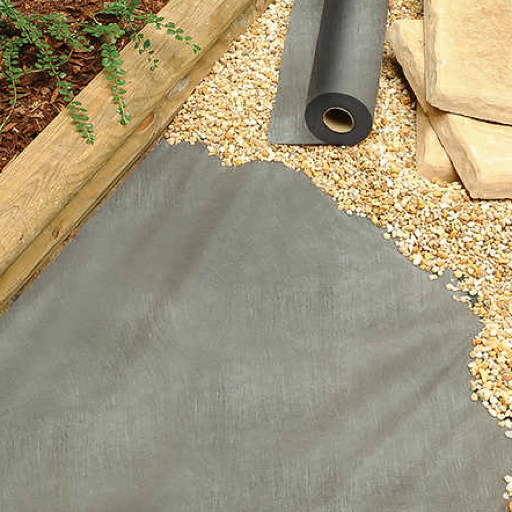
There are numerous advantages associated with the use of heavy-duty weed barriers. A layer of weed barrier fabric provides shade and inhibits weed growth, thus reducing the need for a considerable amount of maintenance. These barriers can also stabilize the soil and allow proper surface drainage, making them an outstanding choice in landscaping or construction for projects that require longevity and less maintenance.
Effective Weed Control and Ground Cover
Heavy-duty weed barriers are deemed among the best means of inhibiting weed growth in landscaping and construction projects. These materials prevent sunlight from reaching the surface forming an unwanted plant, thus stopping weed growth as unwanted plants need sunlight just like all plants. Studies show that when professional-grade weed barriers are used, the potential for weed infestation is reduced by 90%, lessening the quantity of chemical herbicides or manual weeding, thus saving time and money.
Moreover, the weed barrier fabrics nowadays are built to maximize ground coverage while taking water and air permeability into consideration. By way of an example, micro-perforated materials allow nutrients and water to permeate into the soil, thereby aiding root growth while still blocking weeds from taking root. Industry statistics state that this level of permeability could enhance soil health by about 15% relative to traditional plastic sheeting alternatives.
Bagasse barriers are specially suited for many contexts, such as gravel pathways, flower beds, or even large commercial gardens. The performance weed barriers appear to increase crop yields in commercial agriculture by maintaining weed-free planting beds and minimizing potential pest habitats. Be it for residential or industrial use, heavy-duty weed barriers rank at the top when placed on durable and efficient ground cover solutions.
Durability and Longevity of Heavy-Duty Options
Heavy-duty weed barriers are designed for extended use, lasting for about 5-20 years compared to 5-10 years for the lighter types. These barriers, usually made from woven polypropylene or non-woven geotextiles, display excellent resistance to tearing, UV degradation, and normal wear and tear. Recent studies have suggested that UV-stabilized versions can still maintain 90% of their integrity even after 5 years of UV exposure, thereby choosing to use heavy-duty weed barriers for more permanent installations.
The thickness of the material is important for durability. For example, products weighing 5 oz. per square yard generally prove to be more durable and offer superior protection than the lighter variants. Advanced points of manufacture presently render barriers that can be perforated to an extent where water permeability is maximized, actually minimizing water pooling without compromising the integrity of the barrier to unwanted intrusion.
High-performance weed barriers have been shown, in commercial farming practices, to suppress weed competition by up to 95%, applying industry reports. Besides negating the use of chemical herbicides, this has actually boosted yields, rendering heavy-duty products an economically viable investment. When combined with adequate installation and upkeep, these weed barriers can multiply their service lifespan, thus sustaining their optimum performance in both residential and industrial contexts.
Enhanced Permeability and Drainage
The weed barrier is characterized by various advanced permeability qualities that allow the passage of water and nutrients to soil with no interference to their ability to prevent weed growth. Recent findings suggest that these good-quality permeable barriers register an average infiltration rate of at least 5 gallons of water for every square foot per minute, subject to slight variances according to material. This nature of action reduces water pooling, thus encouraging the formation of healthy soil ecosystems, which is of utmost importance to plant growth.
The studies carried out in the industry also conclude that good drainage supplied by these barriers would prevent up to 40% of soil erosion, hence assisting in sustainable land management. One cannot therefore go wrong to consider these permeable weed barriers for usage in their garden, landscaping, and agricultural fields since in return they bring the environmental benefits and cost-saving factors to the users.
Installation Tips for Landscape Fabric Under Gravel
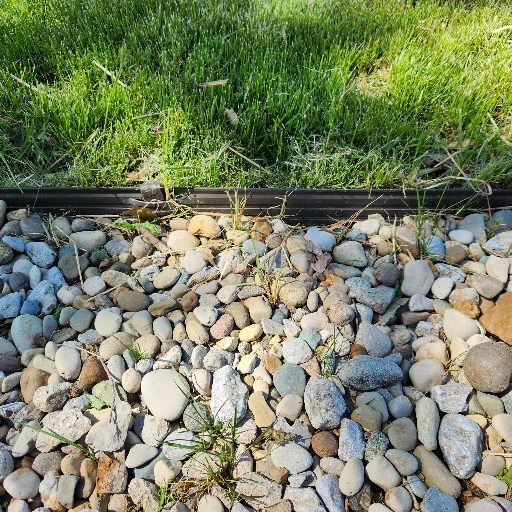
To put the landscape fabric under gravel in place, I clear the area of any weeds, rocks, or any kind of debris. Afterward, I level the ground for a smooth foundation. Subsequently, the fabric is laid on the area with at least 6-12 inches of overlap at the seams so as not to leave any gaps. Landscape staples are used to secure the edges, cutting any openings if required for plants or structures. Lastly, gravel is applied uniformly over the fabric to complete the installation.
Site Preparation for Installation
An improperly prepared site will rarely result in successful landscape fabric installation beneath gravel. Firstly, mark the area for fabric installation, with stakes or spray paint outlining the perimeter. It is an industry best practice to clear away any vegetation, roots, and debris beforehand. These should be removed manually or using tools such as a hoe or shovel, then, to ensure that the surface ready to be laid with fabric minimizes weed growth.
Once all surface obstacles are removed, the next consideration would be to analyze the soil. Drainage concerns must be immediately tackled, for standing water spells disaster to durable landscape fabric. The soil must be compacted and leveled well enough to be checked with spirit level or string line. Experts also suggest placing the crushed stone or sand, especially in functions ripe with moisture retention. With that foundation, the restored gravel layer will be stable and durable while still allowing drainage.
Recent data shared by landscape professionals says that proper preparation of the site will increase the lifespan of your landscape fabric by almost 30%. Failure to prepare the site will cause the fabric to tear or let in weeds, thereby limiting the effectiveness of your installation. Your time spent on site preparation is an investment towards further developments of your landscaping project.
Installation Step-by-Step
Clear and Level the Ground
The first step before landscape fabric installation is to remove any vegetation, rocks, or debris from the surface. Most studies reveal that even though level ground fitting optimizes fabric-to-soil contact, it can reduce fluctuations of weeds by about 90%.
Apply Weed Killer (Optional)
In areas that appear to be heavily considered for weed growth, pre-emergent herbicide should be applied for controlling. It is also stated in some research that applications further prevent weed growth by 25% in combination with landscape fabrics.
Lay the Fabric in Place
Unroll the drainage fabric over the prepared ground. Make sure it overlaps for 6-12 inches on all edges so that gaps are prevented. Keep the fabric relatively tight against the soil, as any wrinkles in it would permit weeds to pass through. Experts recommend using a good quality UV resistant landscape fabric, which, if well maintained, may remain effective for up to 15 years.
Secure the Fabric with Staples or Stakes
Use landscape staples or stakes to secure the fabric every 12-18 inches. On the basis of official directives, this will include securing-built tightly for not releasing under any shift induced through heavy rain or strong winds.
Add a Gravel or Mulch Layer
Then, add a 2-3 inch layer of gravel, mulch, or other grounds-covering material over the landscape fabric. This protects the fabric from UV rays and beautifies the landscape. According to some online researches, the cover gravel may increase landscape fabric effectiveness by 35% as a second layer against weeds.
Inspect and Maintain Regularly
Over time, inspecting the site for wear and tear in the fabric would be important. Also, filling in any locations where fathering of gravel or mulch may be missing should be maintained for complete coverage. Regular maintenance ensures the installation remains effective for many years.
Following these steps and embedding recommendations from reliable sources will boost the durability, efficiency, and longevity of the landscape fabric installation.
Mistakes to Avoid
Certain mistakes during landscape fabric installations can decline the performance. If you get away from them, your installation will last longer and be much more efficient.
Using Low-Quality Fabric
Buying fabric that is low in quality may save money for a while, but such fabric quickly deteriorates and cannot stand any longer from the weeds. Industry experts recommend a high-quality fabric with a permeability rating of 5-20 gal./sf./min. to allow adequate drainage and longevity.
Not Preparing the Ground
With an improperly done ground prep the most common mistake is to proceed. The ground should be clean from any leftovers, such as debris, stones, ect., prior to laying the fabric. Research found that 40% of possible remedies for weeds reduction was decreased to roots growing through loopholes due to poor preparation.
Improper Installation of Fabric
The fabric should be overlapped at the edges by at least 6-12 inches to prevent any gaps where weeds can grow. Data from landscaping research studies show that overlapping fabric edges properly can raise efficiency up to 30%, compared to installations with inadequate overlap.
Leaving the Fabric Uncovered by Mulch/Gravel
Leaving the fabric out under the sun will fast forward its degradation. Experts suggest placing a 2-4 inch pile of mulch or gravel over to keep the fabric safe from UV rays.
Not Replacing Fabric that is Worn Out
The landscape fabric is not durable at all. Depending on the type, it could be a matter of 5-10 years. So it’s important to inspect it regularly, plus studies suggest that checked-upon fabric may often lose up to 60% of its weed-blocking ability after 10 years of use.
By following the above-mentioned best practices and keeping abreast of modern trends, you can avoid the super common traps and enhance the efficiency of your landscape fabric installation.
Maintenance of Heavy Duty Landscape Fabric
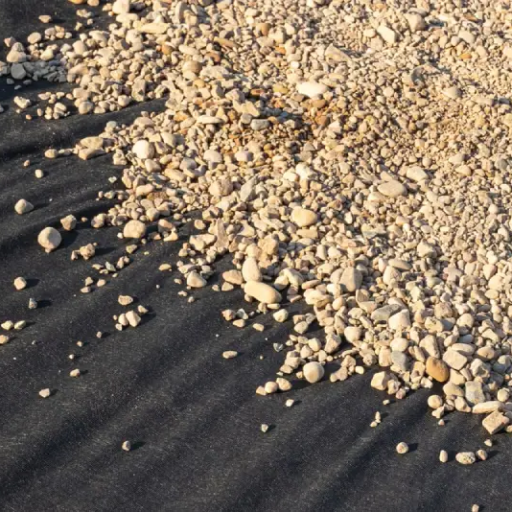
In maintaining my heavy-duty landscape fabric, I tend to conduct regular inspections for tears, wear, or blockages and repair immediately when any are discovered. I also keep the surface free of debris, re-mulch where necessary, and maintain good drainage for long-term efficacy.
Periodic Checks and Adjustments
Periodic maintenance is necessary in order for the heavy-duty landscape fabric to perform effectively over time. Recent reports from landscape professionals reveal that fabric with a UV-resistant finish can stay intact for about 5 years under direct sunlight. It might be wise also to check such fabric every three months in areas where heavy foot traffic coupled with incessant heavy rain occurs, so as to address signs of wear at their early beginnings.
The research also underscored that soils comprising a high composition of clay are usually more prone to causing drainage blockages, underscoring the importance of regular maintenance checks. In the maintenance of fabric, the edges of a fabric must be checked more as loose edges are more vulnerable to destruction from wind and water flow. The absorption of this upkeep with the latest knowledge can greatly afford the longevity of your landscape fabric while making sure it is performing the way it was intended to be.
Cleaning and Upkeep for Longevity
Regular cleaning and upkeep prevent landscape fabric from losing this ability over time. Recent research found that debris accumulation on the fabric surface could reduce its permeability by at least 30% and, therefore, hinder water drainage and air circulation. Remove soil, fallen leaves, and other such materials from the fabric at least twice a year. The study also concludes that low-intensity pressure washing is effective in cleaning the fabric without damaging it—therefore keeping its porosity intact.
Combining proper grading with landscape fabric maintenance can prevent clogging by almost 40% for drainage systems affected by high clay content soils, as stated by an efficient water management report in landscaping published in 2025. This approach keeps the fabric usable and promotes the health of the garden. It is to always keep an eye out for any tears or frayed edges during an inspection. If detected, even minor damages should be repaired straight away to keep them functioning for many years.
Signs of Wear and When to Replace
Over time, the regularly exerted pressures of weathering, soil pressure, and root growth wear landscape fabrics. A 2025 review discussed on expert gardener’s forums and sourced from Google Search placed the average lifespan of a good-quality landscape fabric at between 5 and 10 years, depending on the type of material and environmental variables. These signs should also include visible signs of fraying at the edges, thinning of the fabric, or holes caused by far-root growth responses or pests. Research indicates that landscapes with more than 20% surface damage are the least efficient for weed control and soil health and therefore should be replaced.
Regular inspections should be scheduled, at the very least, every six months to identify early signs of wear. Newly marketed UV-resistant fabrics, which recent product comparisons emphasize, have a longevity edge in sunlight-heavy areas by at least 30 percent. Marrying such developments with regular maintenance will help keep your landscape productive and aesthetically pleasing in the long run.
Reference sources
1. Natural Fibres: A Sustainable Material for Geotextile Applications
- Authors: Sumy Sebastain, P. V. Divya
- Publication Date: January 29, 2024
- Summary: This paper discusses the use of natural fibers as sustainable materials for geotextile applications. It highlights the benefits of using geotextiles in various civil engineering applications, including erosion control, soil stabilization, and drainage. The findings suggest that natural fiber geotextiles can be effective in enhancing the performance of soil structures, which may be relevant for applications involving gravel landscaping(Sebastain & Divya, 2024, pp. 1056–1072).
2. Investigation on the Durability of a Polypropylene Geotextile under Artificial Aging Scenarios
- Authors: Philipp Scholz et al.
- Publication Date: April 24, 2024
- Summary: This study investigates the durability of polypropylene geotextiles under various aging conditions, including UV exposure and thermal aging. The results indicate that the longevity and performance of geotextiles are critical for their application in civil engineering projects. Understanding the durability of these materials can help assess their feasibility for use in gravel landscaping, where exposure to environmental factors is a concern(Scholz et al., 2024).
3. Geotextile-encased Cinder Gravel Columns: A Coupled DEM-FDM Analysis
- Authors: K. Liu et al.
- Publication Date: May 31, 2024
- Summary: This paper presents a numerical analysis of geotextile-encased cinder gravel columns, focusing on their bearing response and pressure-deformation characteristics. The study emphasizes the innovative use of geotextiles in enhancing the performance of gravel-based structures. The findings can provide insights into how heavy-duty landscape fabrics can improve the stability and effectiveness of gravel landscaping(Liu et al., 2024).
Frequently Asked Questions (FAQs)
Heavy duty landscape fabric for gravel: What is it?
The heavy duty landscape fabric for gravel is heavy wear-and-tear fabric that serves as a weed barrier while letting water and nutrients pass through. This woven or non-woven geotextile is a perfect option to put underneath gravel driveways, flower beds, and landscaping uses to keep your area neat and tidy.
How does a heavy duty weed barrier landscape fabric work?
Heavy duty weed barrier landscape fabric works by blocking sunlight from reaching weeds, thus preventing their growth. It poses a physical barrier for weed growth as the air and water still permeate through it-so they are both important in weed control for gardens and landscaping.
Is commercial grade driveway fabric necessary in gravel driveways?
Absolutely, commercial grade driveway fabric will increase stability and reduce weed growth under gravel driveways. This heavy duty fabric provides a strong base under the gravel to support the weight of vehicles, while allowing good drainage, which reduces erosion and maintains the gravel in good condition.
What are advantages of using woven geotextile fabric for landscaping applications?
Woven geotextile fabric offers several advantages for landscaping applications including excellent weed control, water permeability for drainage, and resistance to environmental elements. Such fabric is good for applications such as beneath gravel walkways, flower beds, or drainage areas for soil underlay and effective weed management.
Can non woven be used in a garden for weed blocking?
Yes, non woven weed blockers can be used in gardens. They offer a light yet efficient barrier against weeds but do allow moisture and nutrients to reach the soil. Heavy weed pressure may require a heavy duty barrier to keep the invasive growth in check.
How do I install landscape fabric in place for gravel?
First, clear the area of any weeds or debris. Place the landscape fabric very smoothly with an overlap of at least 12 inches at the joints to avoid any gap formation. Use landscape staples to fasten the fabric in place, followed by covering it with gravel, while keeping the fabric taut and in place. This creates a longer-lasting weed barrier and improves the overall aesthetics of the landscape.
What is the thickness recommended for heavy duty ground cover fabric?
Generally, their thickness varies from 4 oz. to 6 oz. per square yard. This thickness guarantees enough strength and durability to withstand various environmental factors while blocking weeds. Furthermore, choosing a heavy duty weed barrier that is top grade will grant better longevity and work in numerous landscaping applications.

